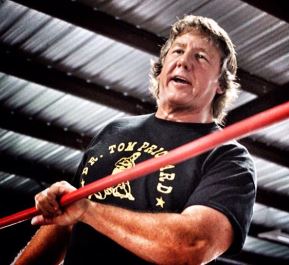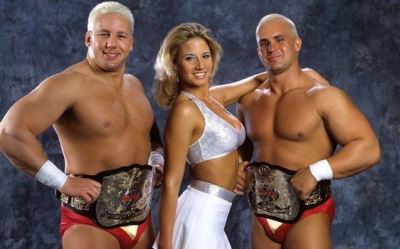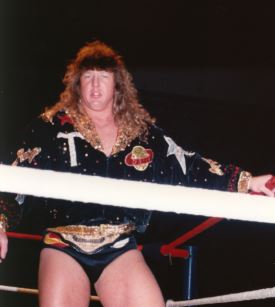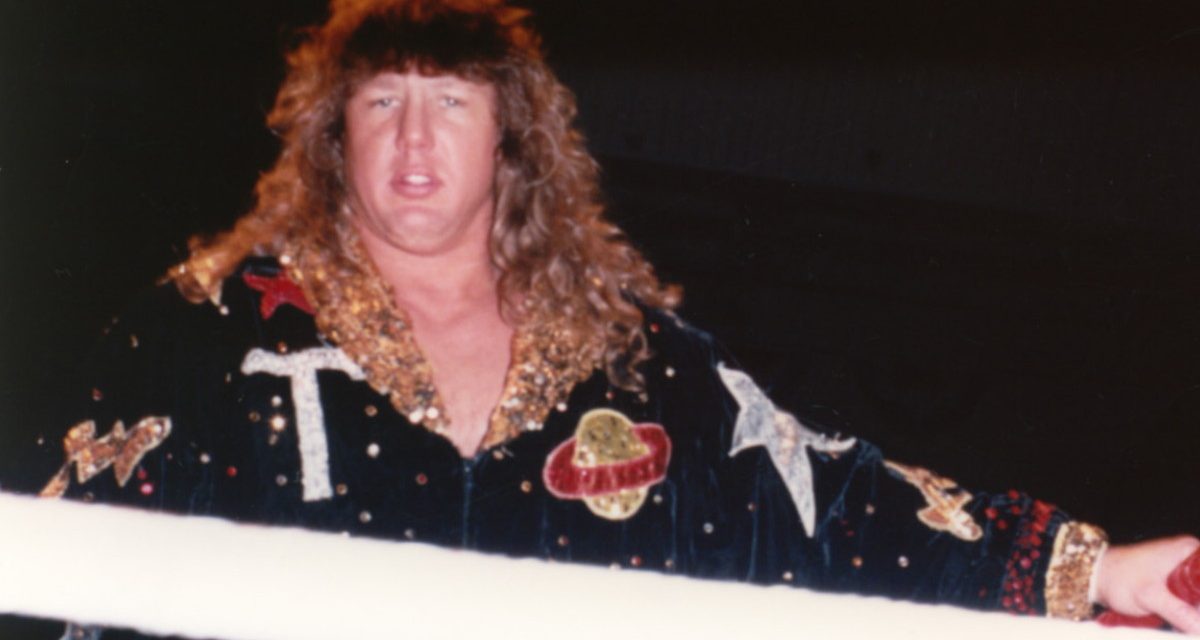There is your way. There is my way. The right way and only way do not exist.
The trainer shook his head at his young charges. “Why can’t they do a hip toss like Harley Race?” he thought. “Don’t they want to be great? Don’t they want to copy a legend of our sport?” Three wrestlers hurt their ankles trying to be Harley Race that day including Bray Wyatt. Off to the side, watching his peer teach the finer points of cloning a wrestler, Dr. Tom Prichard shook his head. Harley Race was able to do his hip toss because he was Harley Race and he is unique. Every wrestler is unique. They aren’t cookies cut out of the same mold. They need to be nurtured, taught from different angles and remember, when training a wrestler your way, my way, no right way or only way.

Dr. Tom Prichard
For over 40 years Dr. Tom Prichard has been involved in the sport of professional wrestling. He started by working for Houston promoter Paul Boesch in the office. Not many years later he entered the mat game and learned his craft travelling across America performing in many of the sport’s iconic buildings. All along the way he kept his ears open and his mind working (even if he never actually got a degree worthy of his title).
Over the last few decades Prichard has been known not just for his wrestling prowess, but for teaching wrestlers for the WWE and in seminars the world over. Noted for his kind, cool demeanor and flexible mind, Prichard remembered the karate teacher he had when he was a boy as the person who influenced his style of educating on the mat. “I started karate when I was 10 and I got my black belt when I was 18,” recalled Prichard. “The guy who taught me karate was that kind of teacher. He took the time to tell you and teach you when you made a mistake. He would tell you what was wrong, and now do it this way. If that does not work for you try it this way. Not everybody is going to do the same thing the same way.”
That philosophy carried over to his training of some of wrestling’s biggest stars. “First of all I believe you should enjoy what you are doing,” said Prichard. “It should be fun and I never got, nor understood the theory and thinking behind having guys doing squats, push-ups, conditioning drills all day when you are there to learn how to work, to wrestle.”
Tom Prichard became one of the WWE’s first full-time trainers in the late 1990s. At the time WCW had opened the Power Plant as a training centre for its up-and-coming wrestlers. The WWE needed some place to develop talent because the regional territories that had once covered North America were mostly out of business, thus it set out to create a minor league system much like baseball and hockey have had for decades.

The Bodydonnas: Zip (Tom Prichard), Sunny (Tammy Sytch) and Skip (Chris Candido).
“I believe it was my brother [WWE office staffer Bruce Prichard, who was also Brother Love] who suggested it (training wrestlers) to Vince [McMahon] because we were in Houston one time during one of my times off and Bruce took me to a wrestling school that Tug Taylor had,” recalled Prichard, who had been a WWE tag team champion alongside Chris Candido (with manager Sunny) as the Bodydonnas, Skip and Zip. “I was showing the guys some stuff and again anyone can teach you how to do it, it is all in the manner in which they do it I guess. Bruce suggested to Vince, because the Bodydonna thing had run its course, and he just threw my name out there and Vince asked me if I’d like to do it.”
Once the project was green lighted, Prichard moved to Stamford, Connecticut, the home base of the WWE. Prichard’s first class featured Mark Henry, Achim Albrecht (Brakkus) and Dwayne “The Rock” Johnson. Not a bad first crew.
“You see, we went to a studio in the warehouse and when we took bumps in the ring and it (the noise) bled through where they did the voiceovers for the shows so they stopped working and they hated us,” said Prichard. “I got into it because I was in the right place at the right time, I was asked and I knew my career was coming to an end. I actually enjoyed that better than wrestling — especially at that stage.”

Dr. Tom Prichard before a bout. Photo by Terry Dart.
Prichard was a hands-on trainer who took the time to show his inexperienced charges the moves of the wrestling business, but the ring they had was terrible. “Most of the Northern rings are stiff. The South had the really good bumping rings because the South had a different style. Up North they had the bigger guys like [Hulk] Hogan and [King Kong] Bundy and those guys,” said Prichard. “I found out Achim was new and he was a bodybuilder, Henry was new and he was a weightlifter, Dwayne knew how to bump, but I was taking all of his moves. So I was trying to take these guys’ moves to show them how it is done, how it feels, how to work with them, I showed them bumps. My body was just being beat to hell. Finally it was [Jim] Cornette who explained it and I explained it and we got the rings changed because the style changed and we needed better bumping rings.”
Having a group of wrestlers such as Henry and Johnson would be enough to hang your hat on, but Prichard found that he really enjoyed teaching. He was not an emperor coach that made his students humble and tried to break them down. He travelled to Deep South Wrestling where young wrestlers such as Curt Hawkins, Trent Baretta and Caylen Croft had just endured a year-long mental beat down in that WWE developmental territory.
“During the week it was… I don’t know how I got through sometimes,” recalled Hawkins at an Empire State Wrestling show, not long before he returned to WWE. “It was like you would almost blackout going through these drills, but you just get through it. Your mind goes to another place to get through what we were doing.”
Prichard arrived in DSW and was horrified by what he found. “When I came in my idea and attitude to training is when you are there to wrestle and learn how to work, you have to wrestle and the conditioning is going to come,” said Prichard. “We did wrestling drills as opposed to conditioning drills. I don’t know how much wrestling they actually did before I got there. I think they got stretched and did conditioning stuff.”
Prichard went on to coach at the WWE developmental territories Ohio Valley Wrestling and then Florida Championship Wrestling.
“I remember when I first came to FCW and Dr. Tom was asking me about if I went to college and what I went for,” said Trent Barreta. “I told him I went, but for nothing. I went for wrestling. There was no backup plan. I think I gained his respect early because I love wrestling, and he so does he. He loved coaching the guys who were wrestlers at heart. The guys who dreamed of being wrestlers since they were kids, just like he did.”
Caylen Croft remembered Prichard fondly. “I always felt that he had a special eye for talent and there is no ego involved with him,” said Croft. “Tom was always wanting to help guys. He is just a wrestler’s wrestler. Tom always did what was best for the talent and just an all-around cool good guy that loved pro wrestling and was really good at training people. He appreciated the guys who loved wrestling.”
The philosophy of Prichard’s former karate teacher flowed through him to his students. “It was never get in the ring and yell at them to get out of the ring if they did something wrong,” said Prichard. “If you did something wrong we corrected it and gave them every opportunity. I thought we were fair, if you had any issues or had any problems that might arise or might need to discuss or get help with then we would help them. It wasn’t an I got ya! It wasn’t ah you did this, sorry kid there is nothing we can do about it. No, we will see what we can do about it. Not everybody is going to help you in life, I know that life is not fair, but while we are here we will help you.”
One of the rules Prichard instituted was one that Rip Rogers used in OVW and that was for each student to wrestle a one-hour long match. “I instituted that too and would work with some of the guys and go an hour,” said Prichard. “When I was in FCW I worked with Heath Slater for an hour.”
Trent Barreta remembers the match and how important it was to the students. “He’s a hell of a wrestler too,” said Barreta. “There was a famous story of Doc wresting Heath Slater in practice. They were set to have an hour-long match, and Doc hurt his ankle real bad early on. Something like 10 minutes in. Doc continued to go, he finished the hour, running spots, taking backdrops and everything. He led by example and every one of his students respected him.”
Tom Prichard was not afraid to show his students the ropes and Heath Slater surely learned a few lessons that day. “Ten minutes in I got him in the corner and said reverse this and give me a backdrop,” said Prichard. “He said, ‘No I don’t want to.’ I said reverse this and backdrop. Then he reversed it and gave me a backdrop and I broke my ankle. I continued the match. At the end of the match Heath throws up outside of the ring and I end up with a broken ankle. I did hour Broadways [draws] with guys to show them that this is not about the hour, it is about the breathing, it is about the pace, it is about the tempo. It is not about doing all this shit. You don’t rest but you learn how to breath.”
With the rise of NXT some wrestling fans have posted on the Internet that the WWE developmental system did not develop stars prior to NXT. This assertion makes Prichard hot. “I was the head trainer at FCW,” said Prichard. “Here is the deal man, I just read something by Jay Bradley, but he goes by something else in TNA [Aiden O’Shea], said there weren’t any big stars that came out of developmental until NXT. I went on a Twitter rant because that was not true. OVW had [John] Cena, Batista, Brock [Lesnar], [Randy] Orton. FCW had Bray Wyatt, Big E and the New Day may have went to NXT once Tampa got moved to Orlando but they got their foundation in FCW. We didn’t berate anybody, it was Steve Keirn, myself and Norman Smiley, Billy Kidman one time. The point is these guys were treated with respect. You can’t expect to get respect unless you give respect.”
As Prichard’s time in the WWE wound down he was asked to write a curriculum that would chart a pathway to train a wrestler and he has since turned it into a book. “They (WWE) wanted a curriculum for years, where you start from point A and go all the way through for a year, step by step, minute by minute,” said Prichard. “I explained to John Laurinaitis that is not how it happens, it is not the way you do it. He said, ‘I don’t care, I need something in writing, write a curriculum.’ So every year this would come up and we would write some half-assed curriculum. Finally, Canyon Ceman came in and he wanted a curriculum with everything from start to finish how you would train somebody for one year. I said that is not how it is done. He said that is how I want it to be done. So I said okay. Well I worked on the son of a bitch for maybe three weeks every day and finally I had it ready. The day I had it ready he showed up and fired me. So I had this curriculum that I worked hard on and a friend of mine said, ‘Why don’t you just publish this as a book and just add some stories to it and sell it?’ I said great and that is how that came about. I give advice, I give suggestions, but it is just common sense advice on how to do the business. Again, you have your way, I have my way, but the right way does not exist. There is nothing in stone that says this is the only way to train somebody. If you have a school, if you are thinking about training this is one way to do it. You can switch it up, you can add, you can take away, you can make it your own, whatever you want to do.”
Since his departure from the WWE in May 2012 Prichard has kept busy by wrestling the occasional match and by doing training seminars across the world. His students can be seen on the big wrestling stages of the WWE and New Japan. The influence Dr. Tom Prichard made on the development of wrestling cannot be understated.
Perhaps Trent Barreta sums up his teacher’s influence best. “Doc would give passionate speeches about wrestling and loving wresting. They were real speeches and I remember several times getting tears in my eyes from his words. He is everything a coach should be. There’s nothing phony about Dr. Tom.”
There is your way. There is my way. The right way and only way do not exist. Perhaps, but Dr. Tom Prichard’s way sure is good.
RELATED LINK

